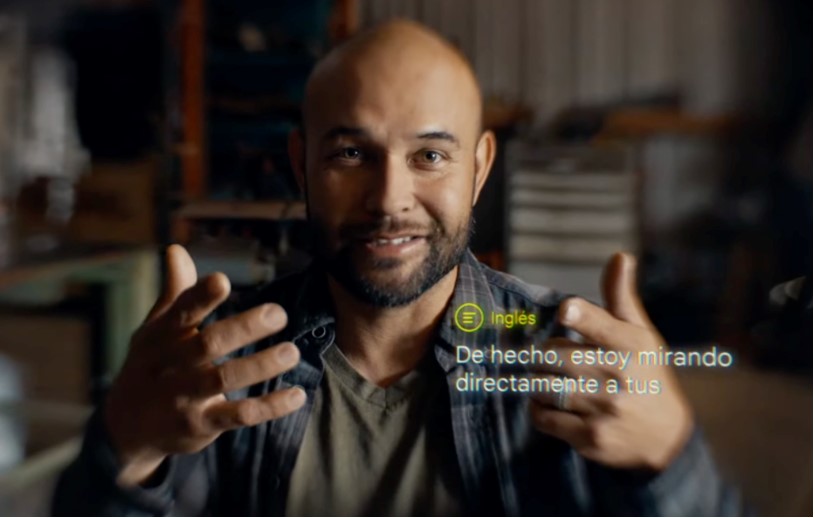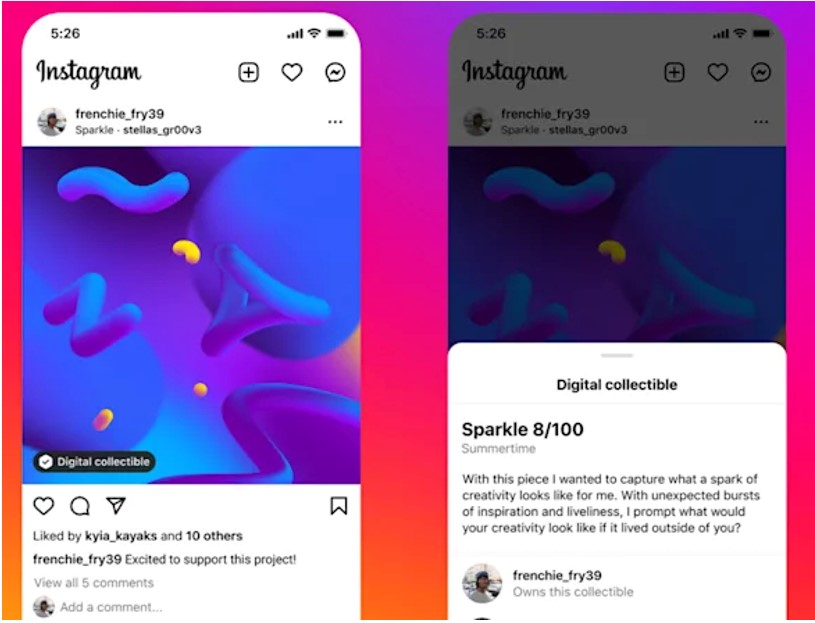Dear Reader,
Tomorrow night, I’m going to share all about one asset class every investor needs to know about – private investments.
Even in this wild market, private companies aren’t getting whipsawed like most other investments. They are one of the very few places where investors can put their money… and avoid stressing out over whether the S&P 500 is up or down.
In fact, private investments can profit even when the rest of the stock market is down. That’s why they’re so powerful as a hedge in times like these.
And there’s one kind of private investment that’s especially interesting right now. “Crypto placements” are giving us a chance to gain exposure to the cryptocurrency space… without losing sleep over the crypto market volatility.
I’ll go into all the details tomorrow night. But please, don’t skip this event. If you haven’t yet reserved your spot, please do so right here now.
This is not an event you’ll want to miss…
Google held its annual developer conference last week. It’s called Google I/O. This is a must-see conference for all technologists, as Google always releases something interesting each year.
This year Google unveiled a new augmented reality (AR) glasses product.
The glasses incorporate microphones, natural language processing (NLP) technology, and Google Translate software. And Google demonstrated how it can translate what someone is saying in real-time and display the words in the wearer’s native language on the lenses.
Here’s what it looks like:
Google AR for Translation

Source: Google
This image is from the perspective of somebody wearing Google’s AR glasses. We can see somebody speaking directly to the wearer. And we can see text in the bottom right-hand corner of the lenses.
In this case, the glasses indicate that the person in view is speaking English. And the glasses translate the speaker’s words into Spanish as he talks.
Obviously, this is an extremely useful application for AR. In fact, Google sees translation as the “killer app” that will demonstrate to consumers just how useful AR glasses are.
And think about this – Google Translate now works across 133 different languages. That’s all the world’s major languages and then some.
So these glasses could enable a group of people from different countries to seamlessly meet with each other without anyone needing to know a language that’s foreign to them.
They could each speak in their native tongue and everyone else could understand them perfectly. That’s a remarkable prospect.
And let’s look at the glasses themselves…
Google’s Glasses Design

Source: Google
These look like a normal pair of glasses. The temples are a little bigger than normal, but they aren’t bulky. And the lenses can be customized for prescriptions.
So everything about this product appears optimized for mainstream adoption. Consumers could wear these glasses around every day, and nobody would think twice about them.
To me, this product launch could be just what’s needed to expose consumers to the concept of AR eyewear. Google hasn’t announced when it will launch these AR glasses yet, but I expect it to be within the coming months. It appears that there aren’t any technological hurdles to overcome, the eyewear looks like it is ready for prime time.
And that would open the door to a flurry of new mass-market product launches from other companies as well, each hoping to capture market share in the industry. And this will all benefit one company in particular… Go right here to learn more.
We’re gearing up for several major product launches in augmented reality this year.
The Event Horizon Telescope just released a picture of the supermassive black hole at the center of our galaxy.
This is the world’s very first look at the black hole named Sagittarius A*. It’s located 27,000 light years away from Earth.
Here is what the latest imaging looks like. It may not seem like much, but it is actually pretty extraordinary:
Sagittarius A* Black Hole

Source: ESO/EHT
We can see the black hole in the center of a swirling mass of plasma. Or, to be accurate, we can’t actually see the black hole itself. We can simply infer its location based on the event horizon.
That’s the point at which the dark orange plasma that we see here is sucked into the hole.
And look at the brighter orange parts in the swirling mass. That’s the plasma that is circling towards our direction on Earth. The light colors represent the plasma that is circling away from us.
This shows us that Einstein’s Theory of Relativity is correct. Einstein’s theory predicted that black holes bend light, making the plasma swirling toward Earth brighter than the plasma circling away from us. And that’s exactly what we are seeing here.
What we don’t see in this image is the sheer scale of Sagittarius A*.
The black hole has a mass about four million times than that of our Sun’s. And its diameter is roughly 60 million kilometers (km). For context, the Earth’s diameter is 12,756 km.
The sheer size and scale of this black hole is extraordinary.
Some readers might notice that the image is blurry. That’s because the Event Horizon Telescope isn’t actually a single telescope, and of course, it is 27,000 light years away, which also means that the image that we’re seeing right now is 27,000 years old.
The image was produced by a network of telescopes stationed around the world. They each capture images of the same object from slightly different angles. Then we compile those images to produce a single composite image.
I’m very curious to see how an image from the James Webb Space Telescope (JWST) would compare. As we saw yesterday, the JWST can produce incredibly clear images from deep space.
So it’s exciting to see more and more of our universe revealed to us. That opens the door to the human race ultimately becoming a space-faring species. We’re on the cusp of some major discoveries in our own solar system, our galaxy, and beyond.
We talked in March about how Meta (previously Facebook) is bringing non-fungible tokens (NFTs) to Instagram.
Well, testing just began a few days ago… and here’s an early look at the platform:
Instagram NFTs

Source: Meta
As a reminder, NFTs are a brand-new class of digital assets. In their simplest format, they are a form of digital art and collectibles. And that’s what we see here.
In the above image, the user is displaying their “Sparkle 8” NFT. We can see that Instagram’s platform confirms that the user owns this particular NFT. And it provides some information on the rarity and attributes of the NFT itself.
This may not look like much, but it is a huge deal. As we discussed in March, this move will introduce Instagram’s two billion monthly active users (MAUs) to NFTs – most for the first time.
From there, Instagram will enable users to “mint” their own NFTs. These users could then sell NFTs to generate a profit. That’s an economic incentive that would help make Instagram even more “sticky.”
Instagram/Facebook was smart in enabling its NFT platform from a technical standpoint to support multiple blockchains. At launch, the platform will support NFTs that run on Ethereum and Polygon. And the team plans to add support for Solana and Flow very soon.
In addition, Instagram’s platform will support popular digital asset wallets MetaMask, Rainbow, and Trust Wallet at launch. And it will soon add support for Coinbase, Dapper, and Phantom.
This multi-blockchain, multi-wallet support is critical to attracting as many users as possible.
And, of course, this is just the beginning.
Meta (Facebook) is gradually building out the infrastructure to support NFTs and digital assets across all of its social media platforms. These include Facebook and WhatsApp as well.
So Meta’s push into NFTs is much bigger than it appears on the surface. And it has the potential to kick the NFT trend into hyperdrive. This is very bullish for the space.
And it’s why I continue to help my readers invest in the most promising projects involving NFTs and blockchain technology more broadly… To learn more about my top recommendations, please go right here for the latest.
Regards,
Jeff Brown
Editor, The Bleeding Edge
Like what you’re reading? Send your thoughts to feedback@brownstoneresearch.com.
The Bleeding Edge is the only free newsletter that delivers daily insights and information from the high-tech world as well as topics and trends relevant to investments.
The Bleeding Edge is the only free newsletter that delivers daily insights and information from the high-tech world as well as topics and trends relevant to investments.